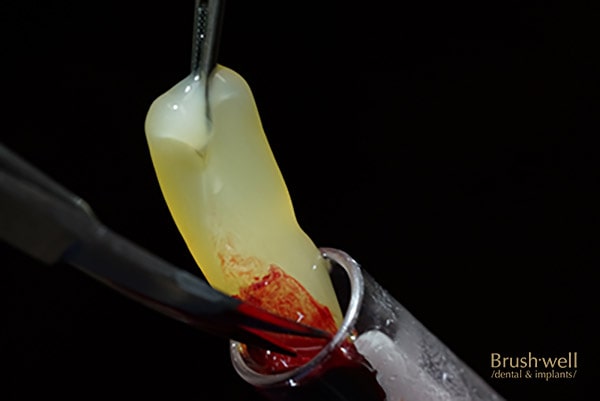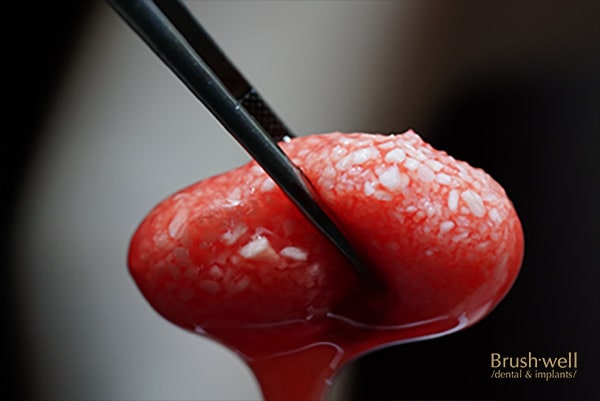Heal Faster with Platelet-Rich Fibrin (PRF)
Platelet-rich fibrin (PRF) is a by-product of blood that contains a high concentration of platelets (the component of your blood that helps you heal). With the advancement in medical technology, our office now utilizes this therapeutic treatment from drawing a small amount of blood—less than the amount drawn from your annual physical exam.
Plasma is the liquid part of your blood that’s mostly composed of water and protein. It lets red and white blood cells and platelets move through your bloodstream. And platelets are the smallest of your blood cells, and they are responsible for healing your wounds. With the advancement of our technology, we can separate your platelets from your other blood cells, giving us a rich supply to effectively help you heal quicker.
To collect plasma, we draw your blood and use centrifuge technology to precisely separate the platelets from the rest of your blood. Then we apply the platelet-rich fibrin (PRF) to the area of your mouth that’s being treated. Once the platelets are in area that’s being treated, they break down and release growth factors. The more growth factors released, the more stem cells produce new healthy tissue. This accelerates your body’s healing process.

What’s so special about PRF?
PRF allows your body to accelerate healing by using normal healing pathways. During the healing process, your body sends the necessary cells to repair your wound. One of those cell types is platelets found in your blood. They perform many healing functions, from forming blood clots to releasing growth factors into your wound. These growth factors are composed of platelet-derived growth factors (PDGF), transforming growth factor beta (TGFβ), and insulin-like growth factor (ILGF) that help the body repair itself by stimulating stem cells to regenerate new tissue.
The more growth factors that are released into the wound, the more stem cells are stimulated to produce new tissue for faster healing. Additionally, a subfamily of TGF called bone morphogenic protein (BMP) induces the formation of new bone. This especially helps for bone grafting procedures. By adding PRF and BMP with bone graft materials, the doctor can handle and deliver the bone more predictably.

PRF and BMP with bone graft for quick healing
When is PRF used?
PRF can be used in tangent with bone grafting, sinus lifts, gum grafts, and extractions.
What are the benefits of PRF?
- Convenient: It’s very quick to produce PRF during the same appointment as the oral surgical procedure.
- Predictable: PRF gives more control to the doctor regarding the healing outcome.
- Faster Healing: Most importantly, patients recover quicker with PRF’s wound-healing capabilities, through increase of tissue synthesis and regeneration.
Is PRF safe?
Yes, it is very safe as PRF is derived from the patient’s own blood, eliminating potential for disease transmissions. Also, only a small volume of your blood is drawn. Your blood is then placed in a specialized PRF centrifuge device that spins to separate the platelets in your plasma.
Should PRF be used in all bone grafting procedures?
No. In some procedures where routine healing is sufficient, there is no need for PRF. However, most procedures could benefit from PRF as it increases the quality and quantity of new bone while allowing for faster healing. This reduces complications and pain, and promotes earlier recovery.
Are there any contraindications to PRF?
In medicine, a contraindication is a condition that serves as a reason to withhold a certain medical treatment due to the harm that it would cause the patient. If you have a bleeding disorder or hematologic disease (such as HIV and sickle cell), then this would disqualify you from undergoing such a procedure. Our clinical team will consult with your physician to determine the right treatment approach for you.
← Bone Grafts &
Sinus Lifts
Dental Implant FAQ →
This article is intended to promote understanding of and knowledge about general oral health topics. It is not intended to be a substitute for professional advice, diagnosis or treatment. Always seek the advice of your dentist or other qualified healthcare provider with any questions you may have regarding a medical condition or treatment.